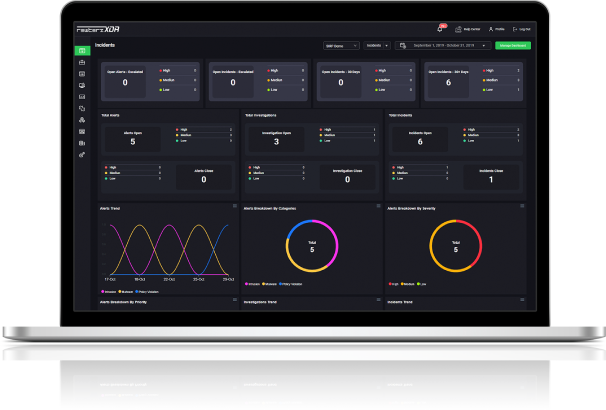

Rewterz Threat Alert – Authorities Raise Concerns Over Escalating TrueBot Malware Attacks – Active IOCs
July 7, 2023
Rewterz Threat Advisory – Multiple Google Android Framework Vulnerabilities
July 7, 2023
Rewterz Threat Alert – Authorities Raise Concerns Over Escalating TrueBot Malware Attacks – Active IOCs
July 7, 2023
Rewterz Threat Advisory – Multiple Google Android Framework Vulnerabilities
July 7, 2023Severity
Medium
Analysis Summary
Cobalt Strike first appeared in 2012 in response to alleged flaws in the Metasploit Framework, an existing red team (penetration testing) tool. Cobalt Strike 3.0 was released in 2015 as a stand-alone opponent emulation platform. However, researchers began observing threat actors using Cobalt Strike by 2016. Cobalt Strike’s use in hostile activities was previously connected with huge cybercriminal operations like TA3546 and APT40. Two-thirds of detected Cobalt hit efforts from 2016 to 2018 were attributable to well-resourced cybercrime organizations or APT groups, according to researchers.
As a multi-function tool, Cobalt Strike enables attackers to infiltrate networks, gain unauthorized access, and perform various malicious activities. It provides a range of features, including command-and-control (C2) communication, post-exploitation modules, privilege escalation, lateral movement, and the ability to launch sophisticated social engineering campaigns. Its flexibility and comprehensive functionality make it a potent weapon in the hands of attackers.
Cobalt Strike often serves as a dropper or initial infection vector for advanced persistent threats (APTs) and other cybercriminal groups. Attackers commonly use phishing emails, exploit kits, or other means to deliver the malware to targeted systems. Once installed, Cobalt Strike allows the attackers to establish a C2 channel and remotely control the compromised machines, enabling them to execute further malicious activities, exfiltrate data, or deploy additional malware.
Cobalt Strike lets the attacker install a ‘Beacon’ agent on the target PC which provides the attacker with a plethora of capabilities, including command execution, file transfer, keylogging, mimikatz, port scanning, and privilege escalation. Cobalt Strike includes a toolkit called Artifact Kit that is used to create shellcode loaders.
Researchers discovered a new wave of phishing attacks in September that infect job seekers in the United States and New Zealand with Cobalt Strike beacons. The malware campaign used the lure of a job in order to infect victims with leaked versions of Cobalt Strike beacons. It was observed that Cobalt Strike is not the only piece of malware used in the attacks. In certain situations, individuals were instead infected with a different type of information-stealing malware known as RedLine or an Amadey botnet executor.
One of the key aspects that make Cobalt Strike a powerful tool is its ability to evade detection by traditional security solutions. It employs obfuscation techniques, encryption, and other evasion mechanisms to bypass antivirus and intrusion detection systems, making it challenging to detect and mitigate. Additionally, Cobalt Strike provides attackers with a user-friendly interface and a wide range of attack vectors, enabling them to customize their campaigns and launch sophisticated attacks with relative ease.
Given its malicious usage, it is important for organizations and individuals to remain vigilant and implement robust security measures to protect against Cobalt Strike attacks. This includes deploying advanced threat detection and prevention solutions, conducting regular security assessments and penetration testing, educating users about phishing and social engineering techniques, and maintaining up-to-date security patches and software updates.
Impact
- Data Exfiltration
- Information Theft
Indicators of Compromise
MD5
- 695caae62d5a1a9bdc1e790ce3bc61ee
- 10c4668bfa80206fb232ad68d32e61bb
- 7391de649e6ce3adfce0ec67dac21ae1
- e34a1b007a4d634e4dbb350f632f2c5a
SHA-256
- b225c6740e94211a16770e0fd1f0118b78a99f428bb7e7d4943b3e290c30b985
- e9c675281176a668f13ed1f6e315a4ab7c1464f9eaa46163affaf9c72762182b
- 73e5ae0c85b89a79d76a050e7bc659ba519cb784ea431cd1d0c399436c4031cf
- 15f10df4cbe41600513bfe4b1d2bd1acb15e7fa226bce2d5fe8675787019de52
SHA-1
- 0f00988c5f9335dab5bc11bd51493dec7a132800
- 1ad5f9637412c764206602a17e44a5eaac3f1172
- a4ff7e367af4f8e4b5cedd24d45a7a67884da9d1
- 5cb155e3a8ae9a8d65ce6b4cdac7ee5828d4c16f
Remediation
- Block all threat indicators at your respective controls.
- Search for Indicators of compromise (IOCs) in your environment utilizing your respective security controls
- Emails from unknown senders should always be treated with caution.
- Never trust or open links and attachments received from unknown sources/senders.
- Enable antivirus and anti-malware software and update signature definitions in a timely manner. Using multi-layered protection is necessary to secure vulnerable assets
- Patch and upgrade any platforms and software timely and make it into a standard security policy. Prioritize patching known exploited vulnerabilities and zero-days.








